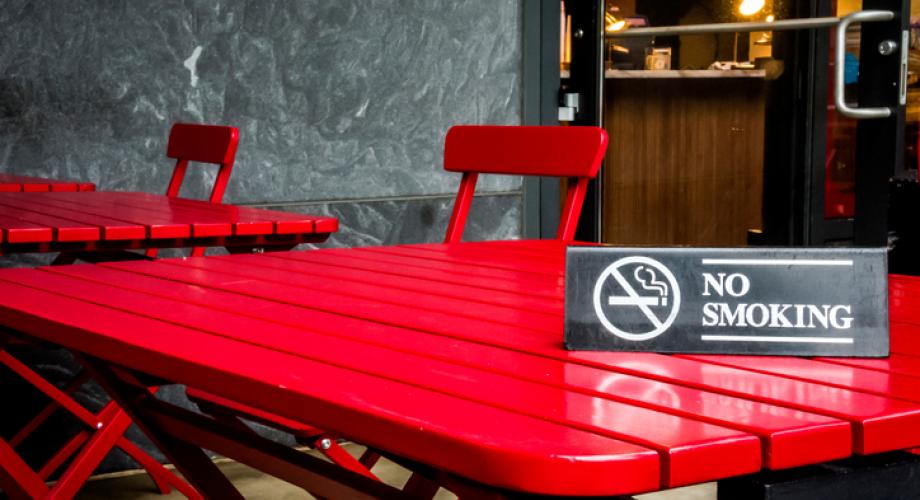Apartment owners, residents thrive as a result of smoke-free community management.
To remain competitive, apartment owners are seeking opportunities to provide attractive living amenities aligning with renters’ lifestyles. Smoke-free living is one approach that owners have recognized that can make them more appealing to health-conscious renters, gain an edge in community marketability and enjoy considerable savings in apartment home maintenance and liability.
Smoke-free policies greatly reduce smoke-related property damage. Statistics from the U.S. Department of Housing and Urban Development estimate turnover cost on a smoking apartment home to be two to seven times that of a smoke-free unit. Typical repairs of a smoked-in unit include replacing carpets, window coverings, appliances and cleaning and re-painting. Maintenance savings typically average $5,000 per turn.
“From an operator’s standpoint, the decision to move to smoke-free environments was an easy one,” says Yunmi Martin, Senior Vice President of Shea Apartments, which owns and operates more than 8,100 apartment homes in California, Colorado and Washington. “When turning over an apartment, there is considerably more effort involved in making sure that a former smoking unit is clean and ready for its next resident. It’s one less thing for us to worry about.”
Smoking-related fires caused more than $200 million in residential property damage, according to Federal Emergency Management Agency. Going smoke-free greatly reduces fire-damage risks. For this reason, insurers offer a discounted rate to communities with smoke-free policies as an incentive. Owners should inquire whether their insurers would match such a discount.
Investing in Residents
Secondhand tobacco smoke is comprised of more than 7,000 chemicals of which over 70 are known carcinogens. Secondhand smoke can travel through fixture cracks, electrical outlets, pipes, baseboards, ventilation systems and windows.
Additionally, there is no safe level of exposure to secondhand smoke.
Going smoke-free can be a quality of life investment in residents and their welfare. Attractive properties bring in desirable residents, and a smoke-free environment contributes to that.
“Our customers were truly the drivers for this change,” Martin says. “It’s been one of the most frequently requested features by our current and future residents. We find that renters are looking for a holistic, healthy environment in which to live, and going smoke-free is one way that we have been able to accommodate that request. Our community amenities have also been developed to better support this effort, including flexible work-out spaces, improved common areas, courtyards, village greens, barbeque stations and dog parks. Our communities cater to our customers’ dynamic lifestyles, and we’re always looking at ways to meet their expectations.”
Changing Attitudes
Today, there is more support for smoke-free living due to changing attitudes about smoking. A recent UCLA Center for Health Policy Research survey of Los Angeles residents found 82 percent of respondents would prefer living in a smoke-free apartment. Among tobacco users, an even higher percentage (85), indicated support for residential smoke-free policies.
UCLA, in collaboration with the Apartment Association of Greater Los Angeles (AAGLA), also found the majority of surveyed apartment owners (representing over 5,000 units) expressing support for smoke-free policies. Yet most indicated they had not implemented a policy because they needed more information. Additionally, owners with smoke-free policies unanimously reported they had no problem filling vacancies.
“Smoking has become such a hot topic,” Martin says, “and the majority of our future residents are requesting a smoke-free environment for themselves and for their families. The response has been extremely positive.”
What About Rent Control
To implement a smoke-free policy, it is recommended that owners inform residents at least 60 days in advance of leases expiring that the building will adopt a no smoking policy that can include all units, balconies/patios and common areas inside and outside.
In instances of rent-controlled properties, owners can provide no- smoking leases for new residents while informing current tenants of the intent to adopt a no-smoking policy. Existing residents who want to opt-in can be offered the opportunity to sign a no smoking lease.
“Although our decision to switch to 100 percent smoke-free communities is relatively new…we think this will affect our bottom line in a positive way,” Martin says. “Cleaner units, fewer conflicts between residents. Decreased liability. It all just makes sense from an owner’s standpoint.”
First and foremost, the lease is the owner’s tool for both education and enforcement. Most residents will comply and follow the non-smoking lease provision, including people who smoke.
In some cases, the owner or manager might have to provide one or more written warnings to remind non-compliant residents about the non-smoking provision. This provides the resident the opportunity to stop smoking where prohibited or for the owner to decide if legal action is required to enforce the policy
Fred Sutton is Director of Government Affairs, Apartment Association Greater Los Angeles.
